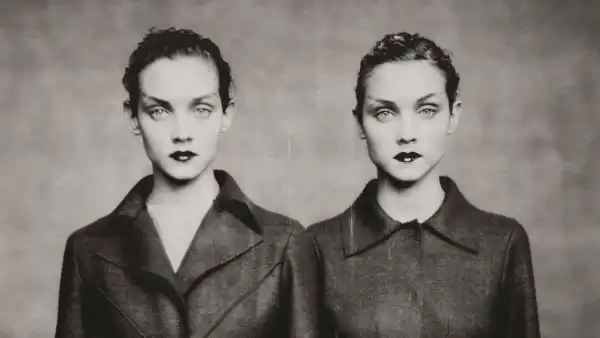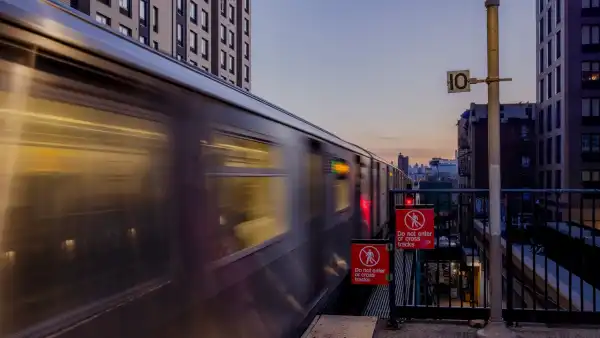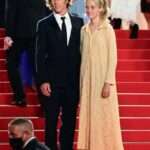
Save this storySave this storySave this storySave this story
Unless you’ve been keenly following fashion periodicals such as W, i-D, Luncheon, and Vogue in every global version over the last several decades, it is quite possible you have not encountered Paolo Roversi’s artistry. Yet, within those pages, he has been a uniquely cultivated and prominent figure; at a moment when many of his most well-known contemporaries in the realm of fashion photography have either passed away or faced cancellation, Roversi, at seventy-eight years of age, endures as a dynamic virtuoso of the craft. His body of work has recently garnered amplified recognition, featuring an exhibit last spring at the Palais Galliera, stationed in Paris, along with another recent showcase at the Pace gallery, located in New York. A compendium created for the Paris exhibition, plainly named “Paolo Roversi,” provides an excellent point to commence discovering the artist, although his finest pieces are so animated that they transcend the limitations of the printed page or a gallery wall.
.jpg) Kate, New York, 1993.Photography courtesy Pace Gallery
Kate, New York, 1993.Photography courtesy Pace Gallery Audrey Tchekova, dress by Atsuro Tayama, Spring-Summer 1999, Paris, 1998 (Max Mixt(e), Spring 1999).
Audrey Tchekova, dress by Atsuro Tayama, Spring-Summer 1999, Paris, 1998 (Max Mixt(e), Spring 1999).
Predominantly self-educated, Roversi, who was born in Italy but is rooted in Paris, has been consistently producing work since the early nineteen-eighties. His perseverance stems from his consistent emphasis on the artistic dimensions within commerce. Similar to Irving Penn during his later career phase, Roversi derives particular inspiration from avant-garde fashion creators, notably John Galliano, Romeo Gigli, Yohji Yamamoto, and Rei Kawakubo of Comme des Garcons. His depictions of their unique clothing designs are painterly and sentimental—more akin to expressionist renderings than exacting records of the garments themselves. Presented in conjunction with his fashion-centric work are portraits and nude studies, frequently featuring the same models already captured in full attire. These visuals are forthright, generally presented frontally, and notably gentle, evoking comparisons to Julia Margaret Cameron’s subtly blurred, sepia-infused images of acquaintances and relatives from the Victorian period. Roversi’s creations exhibit an intimacy and awareness that consistently avoids any hint of exploitation. The figure invariably acts as an extension of a character portrayal, rather than existing as a detached, sculptural form.
 Sasha Robertson for Yohji Yamamoto, Autumn-Winter 1985-1986, Paris, 1985.
Sasha Robertson for Yohji Yamamoto, Autumn-Winter 1985-1986, Paris, 1985. Tami Williams, dress by Christian Dior, Autumn-Winter 1949-1950, Paris, 2016.
Tami Williams, dress by Christian Dior, Autumn-Winter 1949-1950, Paris, 2016. Molly Bair, Chanel dress from the Spring-Summer 2015 haute-couture collection, Paris, 2015 (Vogue Italia, March 2015).
Molly Bair, Chanel dress from the Spring-Summer 2015 haute-couture collection, Paris, 2015 (Vogue Italia, March 2015). Kirsten Owen for Romeo Gigli, Summer 1988, London, 1987. Original Polaroid.
Kirsten Owen for Romeo Gigli, Summer 1988, London, 1987. Original Polaroid.
Roversi readily cites Man Ray and Erwin Blumenfeld as two of his major influences; both individuals operated within the boundaries of mid-century fashion publications and were celebrated for their alteration of visuals within the darkroom setting. Their methodologies—which included the modification of shades and hues, along with image duplication, stretching, or solarization—imparted a distinct, often astonishing, quality to their photography. Roversi operates nearly solely through Polaroid technology, employing both chromatic and monochrome film, and his distinctive touch tends to be gentler, evoking the subtle radiance reminiscent of an Impressionistic canvas. Polaroid encourages an experimental strategy when it comes to both the tangible aspects of photography and the resultant visual. Echoing William Klein’s creations, Roversi’s pieces incorporate unanticipated elements, such as flares of light, blurring effects, and at times, even degradation. Regardless of how two-dimensional the outcomes might seem when reproduced, they embody a palpable essence that defies confinement to a singular plane. Roversi’s paramount fashion photos possess a feeling of incompleteness, of being dynamically alive—as if they continue to coalesce before our very vision.
 Luca Biggs for Alexander McQueen, Autumn-Winter 2021-2022, Paris, 2021.
Luca Biggs for Alexander McQueen, Autumn-Winter 2021-2022, Paris, 2021.
Roversi anchors his ever-changing techniques in the heritage of photography by predominantly operating out of a studio located in Paris, which has served as his workspace for the better part of his career. For a fashion shoot conducted in a Parisian park in 1995, he brought a textile background, thus fashioning an open-air setting evocative of the mobile workshops Penn conceived for his “Worlds in a Small Room” assortment of cultural portraits captured in locales as far-reaching as Dahomey, Nepal, and Morocco. However, akin to Penn, Roversi generally favors working within a more intimate and established environment. In the exhibition’s accompanying book, which features a string of dialogues with the Paris exhibition’s curator, Sylvie Lécallier, Roversi conveys, “I need to be somehow secluded within a room. I require boundaries.” Several of the most remarkable photographs within the book spotlight the studio itself, presenting it as unoccupied, barring a pair of elevated heels mirrored across a wall or a casually arranged military covering, one of his favored backdrops, attached to an unadorned wall.
 Jerome Clark, Paris, 2005 (Uomo Vogue, February 2006).
Jerome Clark, Paris, 2005 (Uomo Vogue, February 2006). Light, Paris, 2002.
Light, Paris, 2002.
To Roversi, the studio is akin to “a vacant platform, a location awaiting inhabitation, a duration yet to be conceived, in which temporal considerations such as seasons, days, or hours hold no bearing.” He is visibly consumed by the alluring aspect of photography, ranging from the element of astonishment and unearthing from its nascence to the most challenging investigations conducted by his fellow artists, and his output possesses a remarkable awareness of both the instant and the stretches of time, quantified in days, years, and decades, that paved the way for it. He pushes the
Sourse: newyorker.com







